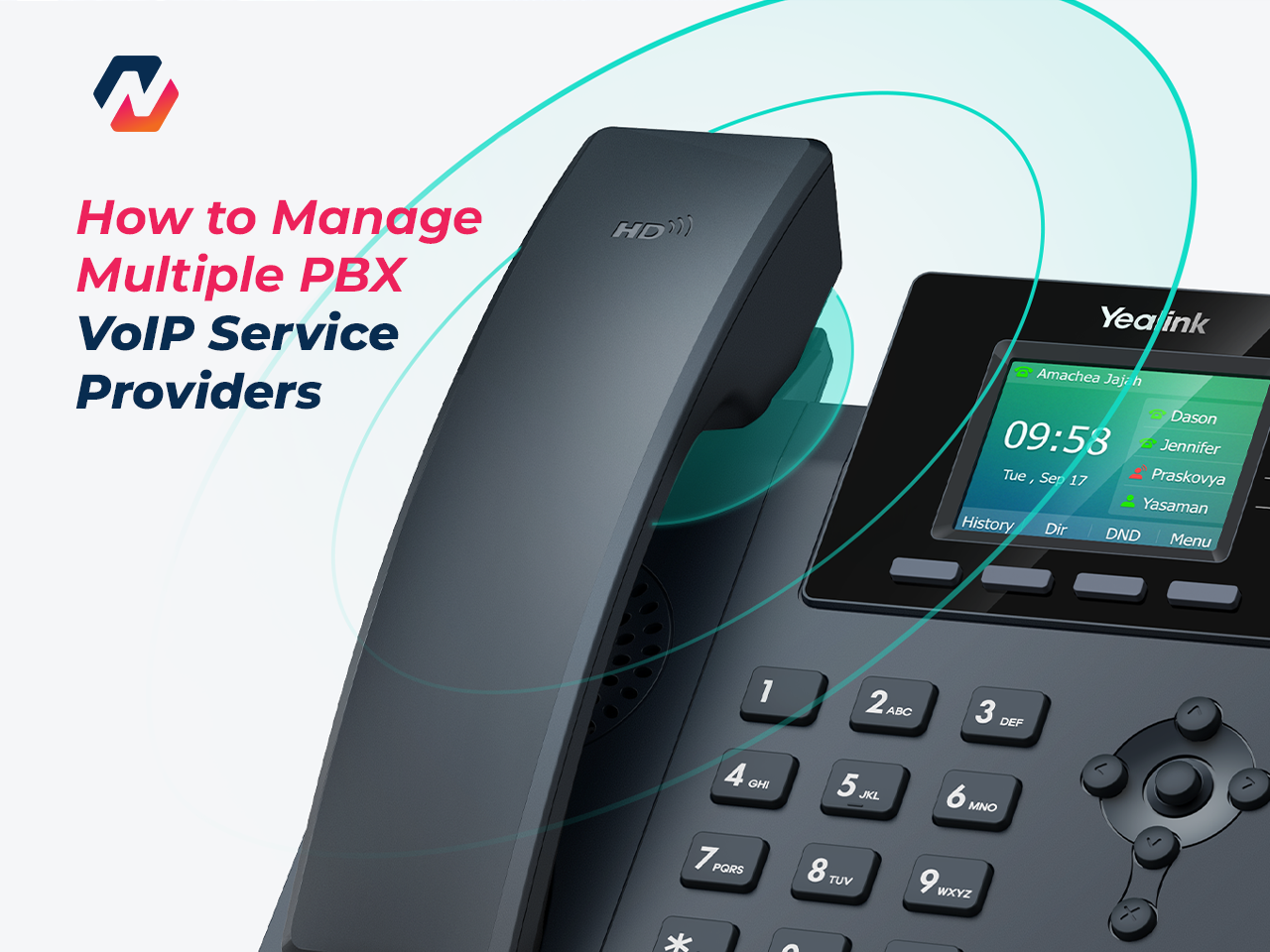Maria Shoukat2025-04-14T10:50:08+00:00
Table of Contents
ToggleIntroduction
Voice over Internet Protocol (VoIP) services have revolutionized how businesses communicate, offering flexibility, cost-efficiency, and scalability. When combined with a Private Branch Exchange (PBX) system, VoIP becomes a powerful tool to manage internal and external communications. However, as businesses scale globally, many opt to use multiple PBX VoIP providers to increase coverage, add redundancy, and reduce costs.
Benefits of Using Multiple PBX VoIP Providers
Redundancy and Reliability
Using a single provider makes your business vulnerable to outages. A technical issue or server failure on their end can leave your entire communication system down. With multiple providers, if one goes offline, traffic can be rerouted instantly to a backup, ensuring that business continuity isn’t compromised. Think of it like having backup generators for your communication network.
Cost Optimization
VoIP providers have varied pricing models based on regions, call volumes, and services. By partnering with multiple providers, you can cherry-pick the most cost-effective routes. For instance, Provider A may offer cheaper rates for North America, while Provider B has better deals in Asia. Smart routing allows you to save money without sacrificing quality.
Flexibility and Scalability
When your team grows or shifts to new markets, you’re not limited by a single provider’s infrastructure or availability. Multiple providers offer broader geographical coverage and can cater to unique needs—whether that’s supporting remote workers, adding international numbers, or handling seasonal call spikes.
Challenges of Managing Multiple VoIP Providers
Billing Complexities
Each VoIP provider has its own billing system, formats, and cycles. Reconciling invoices, tracking usage across platforms, and identifying cost anomalies can be overwhelming. Without a streamlined financial process, you might overpay or miss out on opportunities to optimize spending.
Technical Compatibility Issues
Different vendors often use varying protocols, codecs, or network configurations. If not carefully coordinated, these differences can lead to dropped calls, poor audio quality, or failed connections. Compatibility is especially crucial when you’re integrating systems like on-premise PBX with cloud-based services.
Service Quality Monitoring
Monitoring call quality across multiple providers isn’t easy. Without centralized oversight, identifying the root cause of issues like jitter, latency, or packet loss becomes a guessing game. You need the right tools to pinpoint which provider is falling short.
Planning Your Multi-Provider VoIP Strategy
Define Business Communication Needs
Start with clarity. Are you trying to cut costs, add redundancy, expand globally, or support remote work? Your goals dictate which features are essential—be it global SIP trunking, HD audio, or CRM integration.
Evaluate Internal IT Capabilities
Can your team handle the added technical demands? Managing multiple providers means configuring SIP trunks, securing connections, troubleshooting issues, and handling updates. If your internal IT team lacks VoIP experience, you might need external consultants or a managed service provider.
Budget Allocation
VoIP savings can evaporate quickly if mismanaged. Allocate your budget not just for the services, but also for tools, training, and monitoring systems. Don’t forget to factor in support costs, upgrade fees, and possible penalties for overages.
Choosing the Right VoIP Providers
What to Look For in a Provider
Choose providers with strong reputations for uptime, customer support, and transparent billing. Prioritize vendors who offer rich feature sets like call recording, advanced routing, and analytics. Make sure they provide clear SLAs (Service Level Agreements) that hold them accountable.
Compatibility with Your Existing PBX
Your PBX may be on-premise, cloud-based, or hybrid. Make sure your new provider supports your PBX model and protocols. Ask about supported codecs, trunk configurations, and number porting to avoid integration nightmares later.
Support and SLAs
24/7 support is a must. You never know when a service may go down, and downtime costs money. Ensure the provider offers SLAs with guarantees on uptime (ideally 99.99% or better) and response times.
Setting Up a Centralized Management System
Importance of Centralized Control
Managing each provider separately is a recipe for chaos. A centralized management system consolidates controls into a single interface, letting you monitor call quality, billing, and uptime from one place. It’s like having a control tower for your communications.
Tools for Unified Monitoring
Tools like VoIP monitor, VQM, and SolarWinds help you monitor traffic across providers. They provide dashboards, alerts, and historical data, making troubleshooting faster and easier.
Centralized Dashboards and Interfaces
Some platforms offer built-in multi-provider dashboards. Alternatively, you can use custom dashboards with APIs to aggregate data. The key is visibility—if you can’t see it, you can’t manage it.
Conclusion
Managing multiple PBX VoIP service providers isn’t just for large enterprises anymore. With the right planning, tools, and approach, even small to mid-sized businesses can harness the flexibility, redundancy, and cost-efficiency that comes with a multi-provider VoIP setup.
It’s all about strategy—choose wisely, monitor closely, and automate wherever possible. Do that, and you’ll not only survive, but thrive in the world of modern communication.
Frequently Asked Questions
Evaluate providers based on uptime, support, pricing, and integration compatibility. Pilot a few options before committing long-term.
Yes, with proper SIP trunk failover, DNS configurations, and dual provisioning, you can switch seamlessly.
VoIP monitor, SolarWinds, 3CX, and custom dashboards via APIs can unify and simplify management.
Use tools that track MOS, jitter, packet loss, and call logs in real time across all systems.
Absolutely. Use failover routing rules, load balancing, and API integrations to automate traffic switching.

